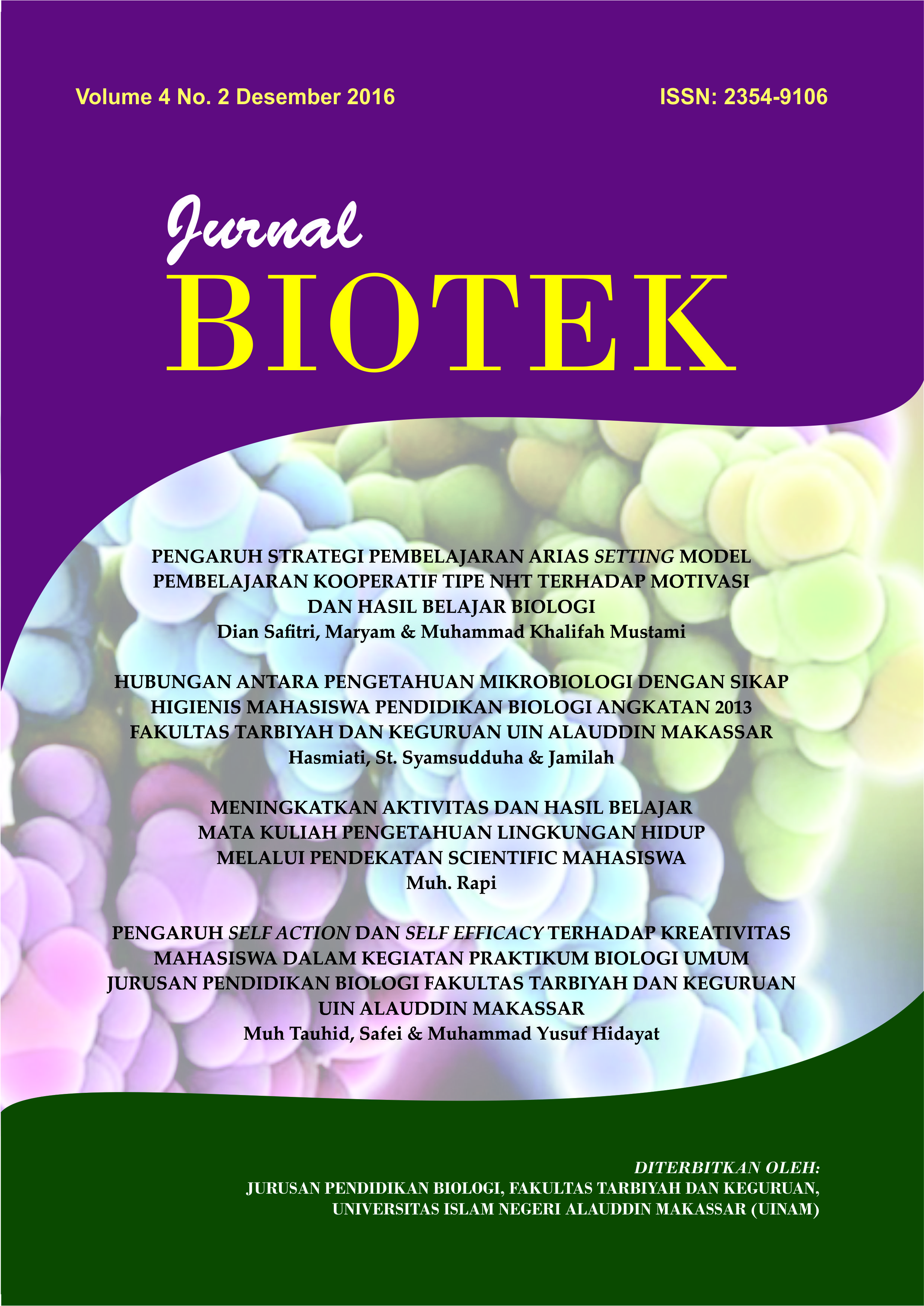EFEKTIVITAS PERBANDINGAN MODEL PEMBELAJARAN SYNECTIC DENGAN MODEL KONVENSIONAL (CERAMAH) TERHADAP KEMAMPUAN BERPIKIR KREATIF SISWA
Abstrak
The study discusses the comparative of the effectiveness of synectic conventional learning model on the creative thinking abilities of students with the aim to determine (1) the ability of creative thinking of students who were taught using conventional learning models (lectures) in VII grade SMP Negeri 3 Pattallassang, ( 2) the ability of creative thinking of students taught using Synectic learning model in VII grade SMP Negeri 3 Pattallassang, (3) the comparative of the effectiveness of the Synectic learning model effective towards creative thinking abilities in VII grade SMP Negeri 3 Pattallassang.
The study is a Quasi-Experimental Research Design with non-equivalent control group design. The study population is all students of VII grade SMP Negeri 3 Pattallassang as much as 98 students consisting of VII1 class to VII3 class. The sample in this study is VII1 class as a control class while VII3 class as an experiment class. Instruments used in this research is students creative thinking test, such as pretest and posttest and observation sheet. Data analysis technique is descriptive statistical analysis and inferential statistical analysis.
Based on the analysis using descriptive statistics in the experimental class, pretest score mean is 5.9 and the posttest score mean is 11.63 whereas the control class, the score mean is 6.1 for pretest and 9.16 for posttest. Based on effectiveness test result to determine effectiveness of the learning model Synecti. Thus, the value of R <1, namely 0.89 <1, which means relatively θ1 more efficient than θ2. It means that there is a difference posttest score variance of experimental class and posttest score variance of control class. Hence, Synectic learning model is effectively used towards creative thinking abilities of students of VII grade SMP Negeri 3 Pattallassang Gowa.
##plugins.generic.usageStats.downloads##
Referensi
Yousefi, Ali. (2015). “The Effects of Synectics Teaching Model in Fostering Creativity”. http://absronline,org/journals/index.php/masr/article/download/362(Agustus 11)
Johnson, Elaine B. (2013). Contextual Teachung and Learning: Menjadikan Kegiatan belajar-Mengajar Mengasyikkan dan Bermakna. Cet ke I. Bandung: Kaifa
Joyce, B dan Weil, M. (1980). Model of Teaching. 2nd Edition. London: Printice-Hal,inc.
Rapi, Muh. (2012). Pengantar Strategi Pembelajaran. Makassar: Alauddin University Press.
Nuha, Ulin. (2016). Ragam Metodologi & Media Pembelajaran Bahasa Arab. Yogyakarta: Diva Press,.
Olahairullah. (2015). “Penerapan model Synectik dalam proses belajar dalam meningkatkan hasil belajar IPA terpadu siswa kelas VII SMPN 7 kota Bima tahun pelajaran 2013/2014”. http://lppm-stkipbima.ac.id (Oktober 31, 2015).
Sugiyono. (2008). Metode Penelitian Pendidikan Pendekatan Kuantitatif, Kualitatif, dan R&D. Bandung: Alfabeta.
Authors who publish with Jurnal Biotek agree to the following terms: Authors retain the copyright and grant Universitas Islam Negeri Alauddin Makassar right of first publication with the work simultaneously licensed under a Creative Commons Attribution License (CC BY-SA 4.0) that allows others to share (copy and redistribute the material in any medium or format) and adapt (remix, transform, and build upon the material) the work for any purpose, even commercially with an acknowledgement of the work's authorship and initial publication in Universitas Islam Negeri Alauddin Makassar. Authors are able to enter into separate, additional contractual arrangements for the non-exclusive distribution of the journal's published version of the work (e.g., post it to an institutional repository or publish it in a book), with an acknowledgement of its initial publication in Universitas Islam Negeri Alauddin Makassar. Authors are permitted and encouraged to post their work online (e.g., in institutional repositories or on their website) prior to and during the submission process, as it can lead to productive exchanges, as well as earlier and greater citation of published work (See The Effect of Open Access).

This work is licensed under a Creative Commons Attribution-ShareAlike 4.0 International License.



